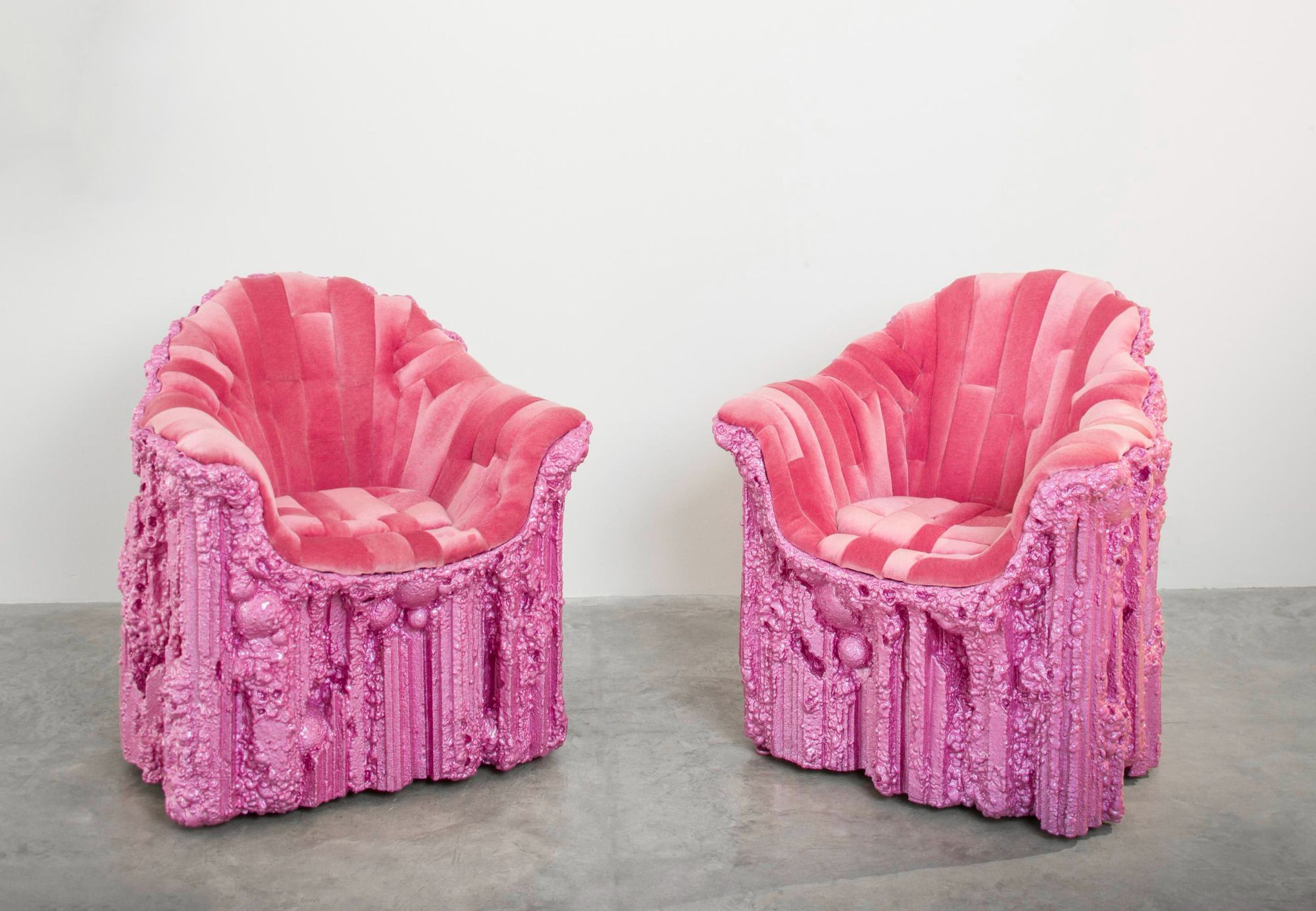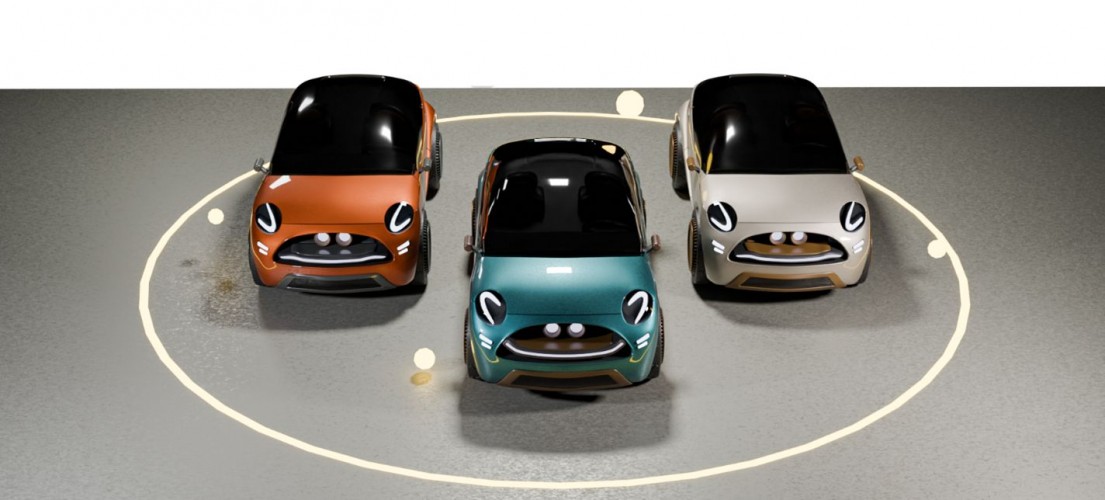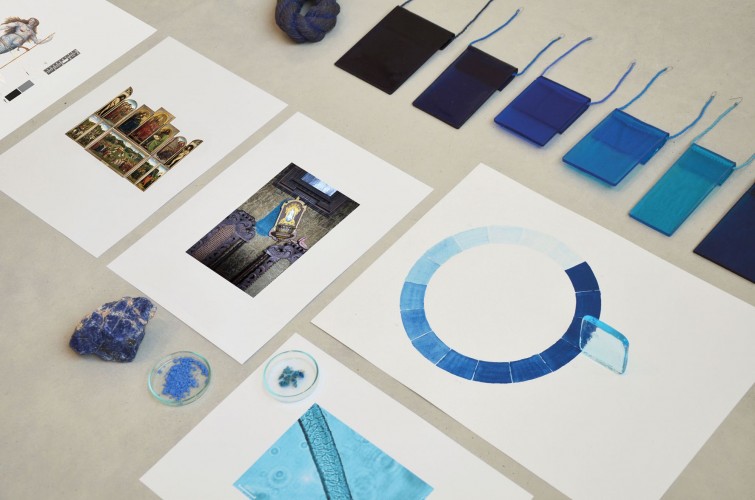Ugly Design
DS.WRITER:
Σοφία Θρουβάλα
Αν θέλαμε να κάνουμε μια αναδρομή στη γοητεία του ατελούς και του φαινομενικά άσχημου ή κατακερματισμένου, θα ανατρέχαμε σίγουρα στον 19ο αιώνα, στην ερειποφιλία και την ανασκαφή, τον θαυμασμό αντικειμένων ενός παρελθόντος κατεστραμμένου, χώρων μη χρηστικών και αντικειμένων άγνωστων στο ευρύ κοινό, που στόχος του εξοικειωμένου θεατή ήταν η αποσαφήνιση και η ένταξη των ευρημάτων σε ένα πλαίσιο αναφοράς. Ο θαυμασμός για το ατελές, το άσχημο και το περίεργο αποτελεί συνήθως το σημείο συνάντησης παρόντος-παρελθόντος, και κατά συνέπεια έναν τόπο επικοινωνίας αντικειμένου και χρήστη/θεατή. Το “άσχημο” Design έχει πλέον πολλούς εκφραστές και αποτελεί θα λέγαμε μια τάση που συγχωνεύει το κοινωνικοπολιτικό με το αισθητικό. Συμπλέγματα υλικοτήτων και υφών δημιουργούν μοναδικά, συλλεκτικά θα λέγαμε, αντικείμενα, τα οποία υφολογικά εντάσσονται στον όρο ugly design.
Στόχος των καλλιτεχνών που παράγουν τέτοιου είδους αντικείμενα, είναι να αντιταχθούν στη μαζικότητα και την ομοιομορφία της μοντέρνας αρχιτεκτονικής και σχεδιασμού. Πιο συγκεκριμένα, πρόκειται για μια αντίδραση στο τέλειο και στιλβωμένο υλικό αλλά και στο ψηφιακό αποτύπωμα, ανοίγοντας, έτσι, μια συζήτηση που αφορά το κατά πόσο τα αντικείμενα που μας περιβάλλουν πρέπει να είναι πιο όμορφα και τέλεια από τις ίδιες μας τις ζωές. Τι είναι αυτό που επικοινωνούν, τι είναι αυτό που τα κάνει χρηστικά και γιατί όλοι έχουμε μια τάση να γοητευόμαστε από το εύκολο και απλό. Όπως λέει και ο κριτικός design Stephen Bayley, συγγραφέας του Ugly: The Aesthetics of Everything, κείμενο του 2013 για το Architectural Review: “Η παράδοξη πραγματικότητα είναι η εξής: η τόση ομορφιά μπορεί να είναι αβάσταχτη, να είναι ένας απαίσιος κόσμος γεμάτος από σχολαστικά κομμένα γκαζόν και λινά υφάσματα. Έτσι, όπως σημειώνει ο Collins, η ψηφιακή εποχή μάς έχει κάνει όλους να θέλουμε να αγγίξουμε τα υλικά, να λερώσουμε τα χέρια μας και να δημιουργήσουμε αντικείμενα από πηλό.”
Συνδέοντας την παραπάνω φράση με ιστορικότητες του 20ού αιώνα, μπορούμε να εντοπίσουμε ίσως τις απαρχές τού ugly design στη δεκαετία του ‘40, και συγκεκριμένα το 1949 στο κείμενο μανιφέστο της ART BRUT, με τίτλο “Ακατέργαστη τέχνη, προτιμότερη από τις πολιτισμικές τέχνες”, του Ζαν Ντιμπιφέ. Σύμφωνα με τον Ντιμπιφέ, “παρευρισκόμαστε πια στην εντελώς ακατέργαστη καλλιτεχνική διεργασία, που την επινοεί ξανά ο δημιουργός με αφετηρία τις ενορμήσεις του” (NOTE: Ομάδες Κινήματα Τάσεις της Σύγχρονης Τέχνης μετά το 1945, Μ. Καραγιάννη (μτφ), Β. Τομανάς (επιμ.), Εξάντας και Ανωτάτη Σχολή Καλών Τεχνών Παρισιού, 1991, Παρίσι-Αθήνα), και για να είναι ένα αντικείμενο επινοημένο πρέπει να είναι απομακρυσμένο από τα πολιτισμικά πρότυπα.
Παρομοίως, το Design αναζητά τις τελευταίες δεκαετίες μια νέα αισθητική γραμμή. Όπως περιγράφει χαρακτηριστικά ο Jonas Nyffenegger (συνιδρυτής με τον Sebastien Mathys του @uglydesign, ενός πολύ επιτυχημένου λογαριασμού στο instagram), “ένας τόσο σοβαρός κόσμος είναι βαρετός, και ένας τόσο εκκεντρικός, εξουθενωτικός. Χρειάζονται και τα δυο. Νομίζω, πρέπει να αναζητήσουμε μια νέα αισθητική.” Είναι ιστορικά αποδεκτό πως η αναζήτηση νέας αισθητικής, η διαμόρφωση ενός νέου λεξιλογίου, σκιαγραφεί πολιτικές και κοινωνικές αναταραχές. Όπως εύστοχα αναφέρει ο Chris Schanck, το μη τέλειο design παραπέμπει στην αποτυχία του ύστερου καπιταλισμού.
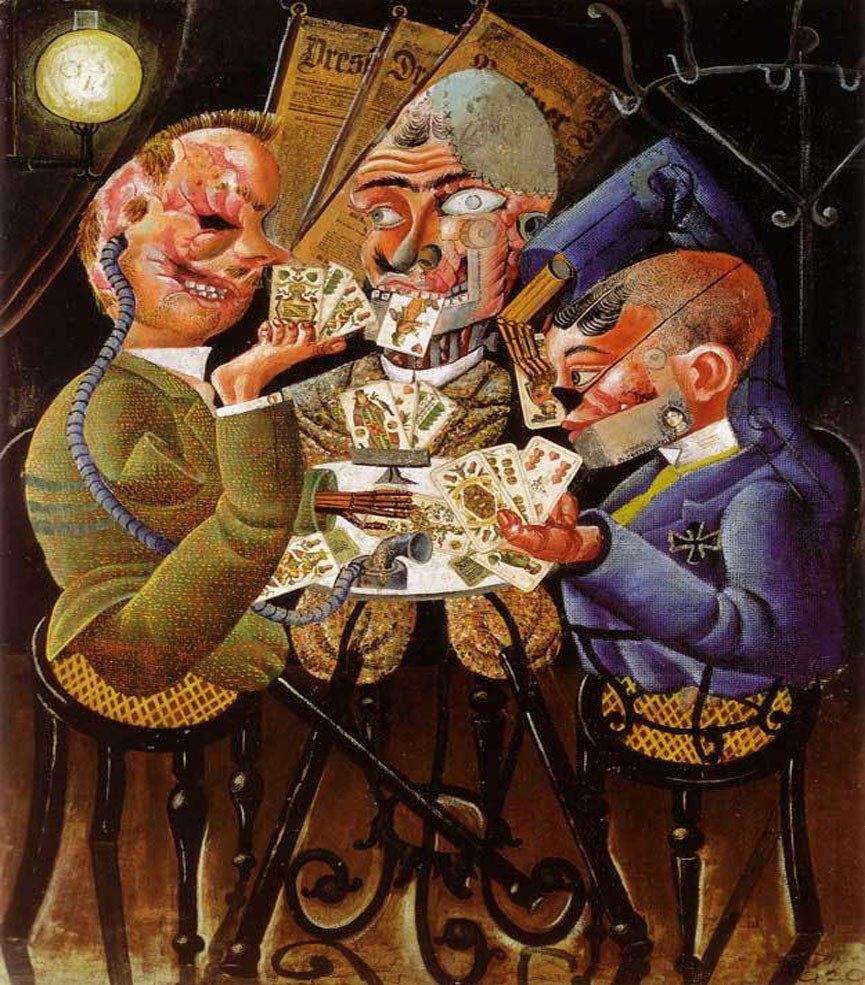
Otto Dix, Skat Players, 1920 | Nationalgalerie, Staatliche Museen, Berlin, Germany. Photo Credit_ Erich Lessing _ Art Resource, NY _ © Estate of Otto Dix _ SODRAC (2018)
Σημαντική αφετηρία τού ugly design υπήρξε η περίοδος μετά τον Β’.Π.Π, κατά την οποία οι χειροποίητες κατασκευές και τα μη βιομηχανικά αντικείμενα (σε αντιδιαστολή με τα ready made και το Bauhaus) ήταν αναγκαία ύπαρξη στον χώρο του design. Σχεδιαστές, κεραμίστες και γλύπτες, όπως οι George Nakashima, Peter Voulkos, Sheila Hicks, Magdalena Abkanowicz, δημιουργούσαν αντικείμενα με έμφαση στο υλικό και στη διαδικασία της εφεύρεσης νέων αντικειμένων. Το 1960-70 το Design διαδόθηκε και στην Ιταλία, ενώ τη δεκαετία του 1980 δημιουργήθηκε η διάσημη κολεκτίβα Memphis Design από αρχιτέκτονες, σχεδιαστές, επιπλοποιούς και συγγραφείς. (NOTE: Όνομα κολεκτίβας από το τραγούδι του Μπομπ Ντίλαν, “Stuck inside of Mobile with the Memphis Blues Again”) Ιδρυτής ήταν ο Ιταλός Ettore Sottsass, ο οποίος πίστευε πως ο μεταμοντερνισμός είναι ένα από τα σημαντικότερα “αφιερώματα” στην ασχήμια που έχει δει ποτέ ο δυτικός αρχιτεκτονικός και σχεδιαστικός κόσμος (αναφορά στον Robert Venturi). Τέλος, είναι σημαντικό να αναφερθεί πως η συγκεκριμένη ομάδα σχεδιαστών επηρεάστηκε βαθιά από κινήματα όπως η ArtDeco, η Pop-Art, το Κιτς και φυσικά ο ριζοσπαστικός μετα-μινιμαλισμός των δεκαετιών ’70 και ’80.
Στις δεκαετίες που υπάρχει το Ugly Design, στάθηκε κριτικά απέναντι στην κάθε εποχή, φτάνοντας πια να κατονομάζει ζητήματα πολύ σύγχρονα και φλέγοντα όπως είναι η κλιματική αλλαγή, σε συνδυασμό με τις κοινωνικές, κυρίως, ανισότητες, τις πολιτικές αναταραχές και τη δίχως ορίων εργασιακή εκμετάλλευση. Σύγχρονοι δημιουργοί αντικειμένων, όπως ο Chris Wolston και η Ketie Stout, επανεξετάζουν τα υλικά τους κάνοντας μια στροφή στην πρώτη ύλη, στροφή ιδεολογικά κοινή με εκείνη της art brut (matièrism).
Ενσωματώνουν τον πειραματισμό νέων υφών μέσω της επαν-εύρεσης και της επαν-ανακάλυψης σχημάτων και υλικών. Το εργόχειρο, φαινομενικά άσχημο και άχρηστο, μεταφέρει το μήνυμα μιας νέας αισθητικής, μιας διαλεκτικής περί οικονομίας, καθώς ως αισθητική πια νοείται ο σύγχρονος προβληματισμός και κατά συνέπεια η απομάκρυνση από δογματικά φονξιοναλιστικά πρότυπα, αποκομμένα από τη σύγχρονη πραγματικότητα. Έτσι, είναι εύκολη η συγγένεια των αντικειμένων αυτών με τις ιδεολογικές προεκτάσεις τού νεο-νταντά (NOTE: όπως εκφράστηκε από τον Rauschenberg το 1953, ο οποίος μίλησε για τη συμφιλίωση τέχνης και ζωής) και λιγότερο με την pop-art.
Οι συνδέσεις αυτές εκφράζονται από τους ίδιους τους δημιουργούς του ugly design, αφού για παράδειγμα η Katie Stout, η οποία αποκαλεί τη δουλειά της naive-pop, συσχετίζει το έργο της με την περίοδο της λήξης του Α’ Π.Π., και συγκεκριμένα με το Dada, το οποίο αντιλαμβάνεται ως ένα ακατανόητο σχήμα το οποίο ήταν λογικό να προκύψει, αφού πλέον τίποτα δεν είχε νόημα. Επιπλέον, δεν θα ήταν άσκοπο να συνδεθεί το ugly design με έργα τού Ότο Ντίξ και γενικότερα με το kitsch, το οποίο (όπως και το μπαρόκ) ακολούθησε μια εποχή φαινομενικής αισθητικής ακμής ως έκφραση της πολιτικής αποτυχίας. Συνώνυμο του ακαλαίσθητου και του προκλητικού, αποτέλεσε αισθητική στάση η οποία χρησιμοποιούσε λαϊκά και ξεπερασμένα μοτίβα και φόρμες συγκερασμένες σε ένα νέο corpus, επιτυγχάνοντας μια διαφορετική επικοινωνία με τα ίδια μέσα. Όπως αναφέρουν και οι Nyffenegger and Mathys, οι νέοι designers πρέπει να αγκαλιάσουν τον πειραματισμό και να πάψουν να φοβούνται μήπως κάνουν κάτι άσχημο, συμπληρώνοντας πως “αν όλα ήταν όμορφα, τίποτα δεν θα ήταν”.
Τόσο ο συσχετισμός του ugly design με τις εικαστικές τέχνες και ειδικά με τις ιστορικές πρωτοπορίες, όσο και το γεγονός της μοναδικότητας του κάθε αντικειμένου, γεννούν το ερώτημα, αν τα ugly objects είναι μόνο (αντι-)αισθητικά. Αν είναι, δηλαδή, μια σύγχρονη μορφή τέχνης ίσως γλυπτικής ή εγκατάστασης, ένα νέο προϊόν για επίδοξους συλλέκτες ή κάτι χρηστικό στο οποίο ο καθένας έχει πρόσβαση. Η απάντηση δόθηκε από τον Bellavance-Lecompte, αρχιτέκτονα από τον Καναδά και συνιδρυτή των Nomad, Carwangallery, Oeuffice, A-trio και Samare. Συγκεκριμένα, καταδικάζει το ερώτημα “τέχνη ή design” ως κάτι βαρετό, λέγοντας πως το σημαντικό είναι η εμπειρία που κανείς βιώνει ερχόμενος σε επαφή με ένα αντικείμενο. Κάθε εμπειρία είναι προσωπική, και, μιλώντας συγκεκριμένα για το fair Nomad, λέει πως έργα τέχνης και design συνυπάρχουν σε έναν διάλογο παραδόσεων και τεχνικών. Ωστόσο, είναι ενδιαφέρον να σκεφτεί κάνεις τον αριθμό προσέλευσης εξειδικευμένου κοινού συγκεκριμένα στο Nomad (3,800 collectors, dealers καi art/design enthusiasts), ώστε να δώσει και ο ίδιος μια απάντηση στο ερώτημα “τέχνη ή design”.
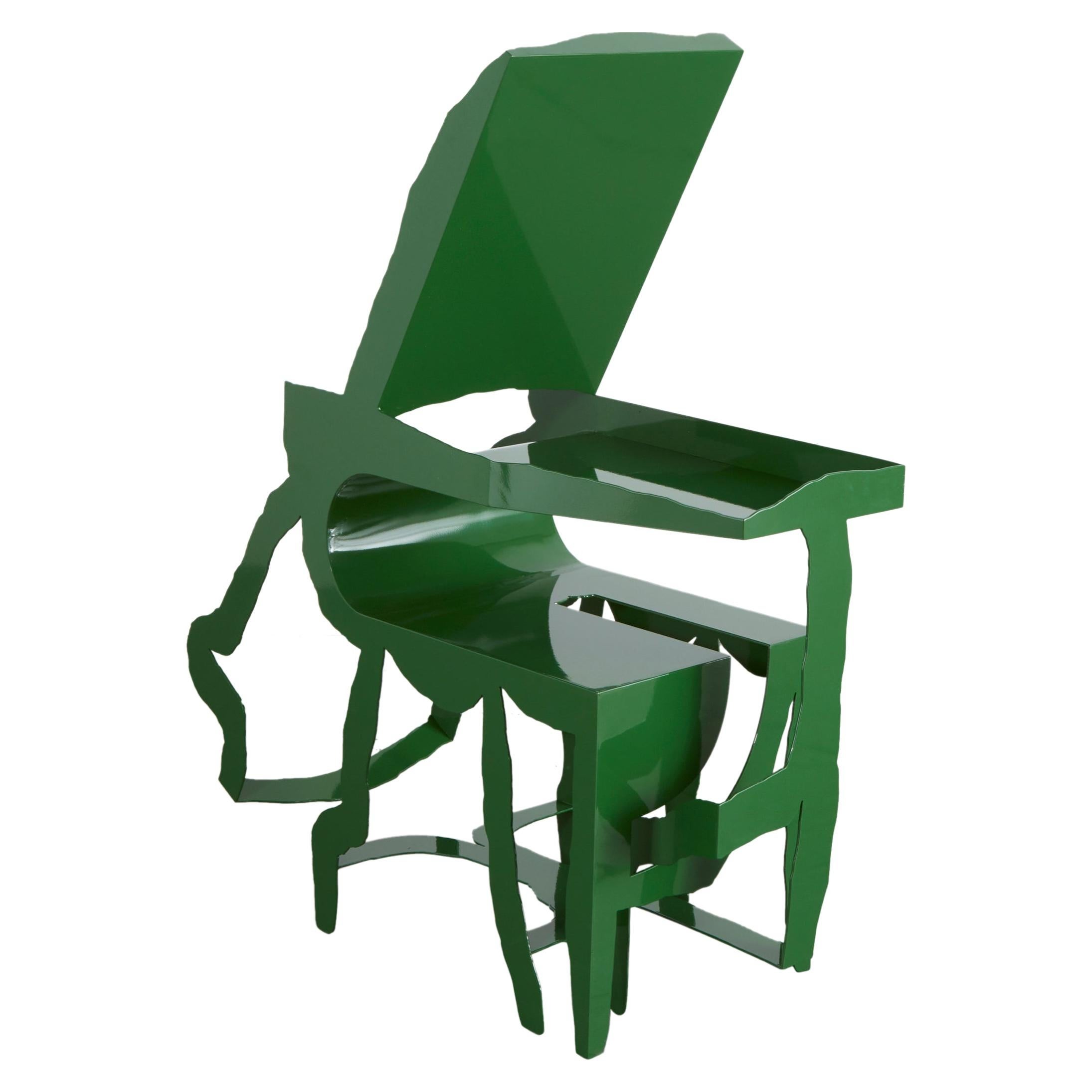
Katie Stout Pink Pulp Vanity + Stool | 2015 Nina Johnson
Τόσο από άποψη art market όσο και από άποψη κοινωνικοποίησης του αντικειμένου αλλά και της κριτικής που ασκεί στην κοινωνία, ίσως τελικά μπορούμε να μιλάμε για μορφές τέχνης και μάλιστα αρκετά ριζοσπαστικές, στο θεσμικό ωστόσο πλαίσιο. Είναι σημαντικό να αναφερθεί το πώς το ugly design ανοίγει μια συζήτηση περί τραύματος όχι μόνο κοινωνικού, αναφορικά με αποικιοκρατικά και καπιταλιστικά σύμβολα τα οποία ακολουθούν όλη την πορεία του design, αλλά και αναφορικά με την κλιματική κρίση. Η στροφή στη βιωσιμότητα και στα φιλικά, προς το περιβάλλον, υλικά χαρακτηρίζει τον σημερινό σχεδιασμό, ενώ τέλος τα αντικείμενα αυτά δεν αποτελούν μόνο εικαστικές παρουσίες αλλά και χρηστικά αντικείμενα. Οι συλλέκτες επιπλώνουν το σπίτι τους με κομμάτια design και ζουν με αυτά, μη έχοντάς τα σε προθήκες ή σε εκθεσιακούς χώρους. Δεν είναι φονξιοναλιστικά με την έννοια που όρισε το Bauhaus, αλλά είναι χρηστικά και αποτελούν επιλογές ζωής που, πέραν της συλλεκτικής τους αξίας, λόγω μοναδικότητας ή καταξίωσης του δημιουργού, καθιστούν έναν χώρο προσωπικό και, δεδομένων των όσων αναφέρθηκαν, θα μπορούσαν να θεωρηθούν ακόμα και φορείς της ιδεολογίας και της προσωπικότητας του κατόχου τους.

Robert Rauschenberg. Charlene_1954
-Βιβλιογραφία | Αρθρογραφία:
• Frampton Kenneth, Μοντέρνα Αρχιτεκτονική, Ιστορία και Κριτική, Θεμέλιο, 2007
• Cohen Jean-Louis, Η αρχιτεκτονική μετά το 1889, Με το βλέμμα στο μέλλον,
Κολώνας, Τουρνικιώτης (επιμ.) Μαρτινίδης (μτφ), Univesity studio press, 2012
• Bell Joulian, Ο καθρέπτης του κόσμου, Μια νέα ιστορία της Τέχνης, Κ. Ιωαννίδης
(επιμ.) Μεταίχμιο, 2016
• Ομάδες Κινήματα Τάσεις της Σύγχρονης Τέχνης μετά το 1945, Μ. Καραγιάννη (μτφ),
Β. Τομανάς (επιμ.) Εξάντας και Ανωτάτη Σχολή Καλών Τεχνών Παρισιού, 1991, Παρίσι-
Αθήνα
• https://www.artsy.net/article/artsy-editorial-revolution-ugly-design-upendingconventions-
beauty
• https://flash---art.com/2020/03/is-collectible-design-a-new-form-of-contemporary-artnomad-
st-moritz-3rd-edition/
• https://www.sothebys.com/en/articles/can-i-sit-on-it-thoughts-on-collectible-design




